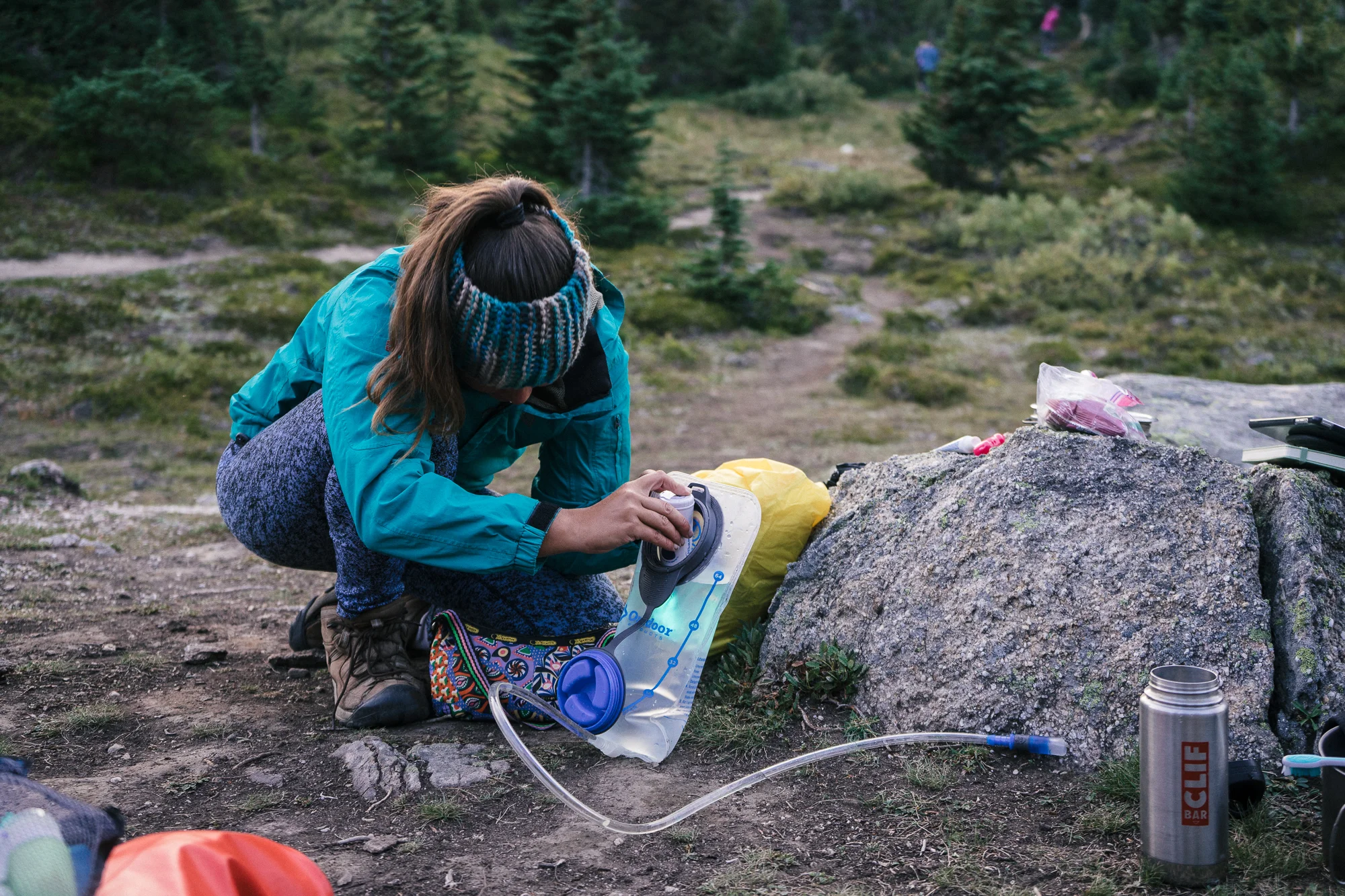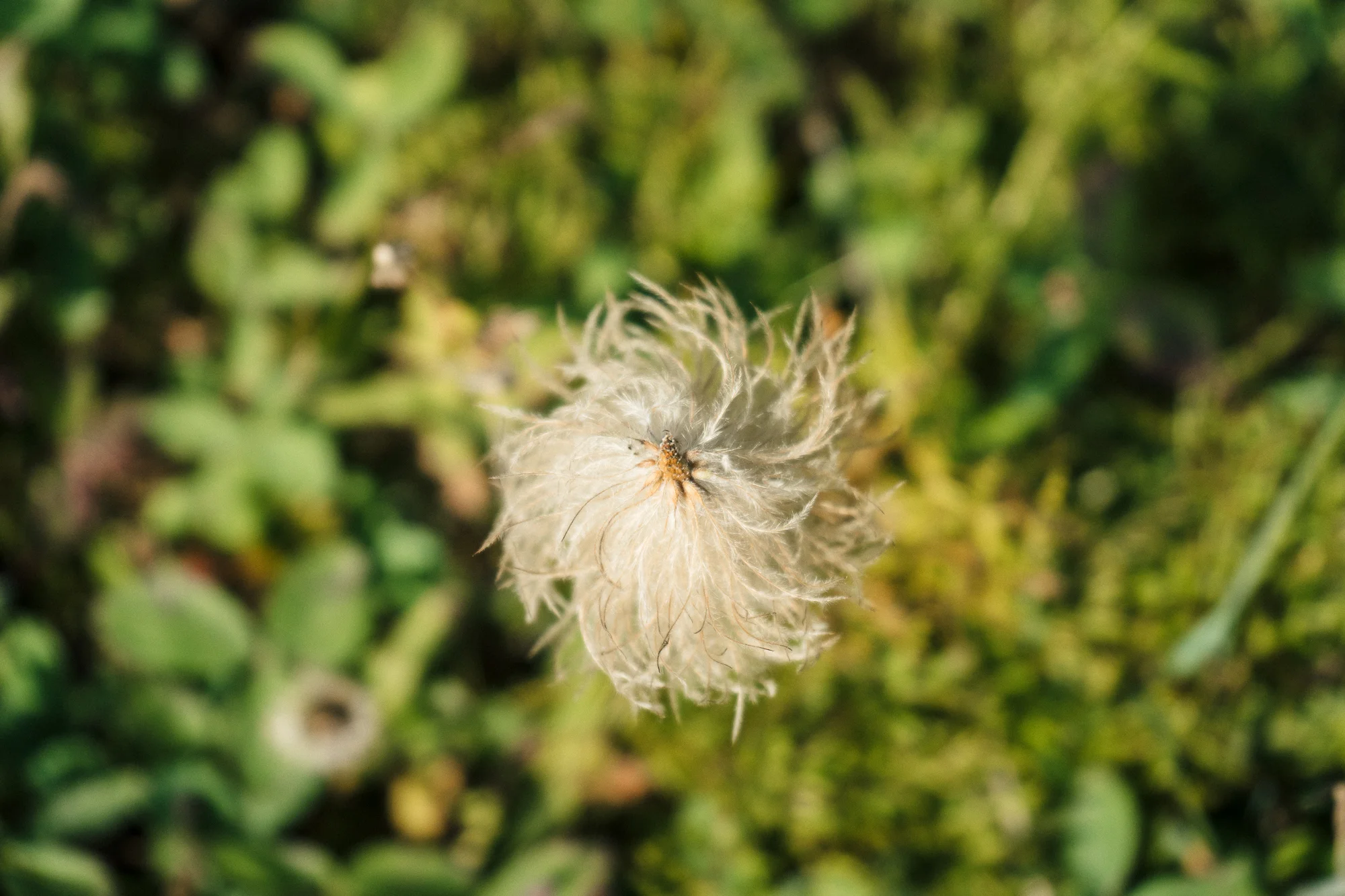
7 Things I Learned at Baker Lake
Hike 6 | Even though we were disappointed to miss out on completing the whole Skoki Loop, the smoke did clear enough for us to spend two days on it. I learned a few things on this hike - from the practical to the ridiculous - and here there are!
Hike #6 | 860m Elevation Gain | 26.2km Hiked
Even though we were disappointed to miss out on completing the whole Skoki Loop, the smoke did clear enough for us to spend two days on it. We hiked out and back to Baker Lake and had an incredible trip. The scenery was stunning and constantly changing. Once we got past the long logging road start to it, the hike became more engaging and we enjoyed the streams, nearly haze-free views, and snack stops along the away.
I learned a few things on this hike - from the practical to the ridiculous - and here there are!
1. Learn from Others
I had never hiked with Corrina or met Laura. I suppose it can seem a little risky to plan a multi-day trip with people you don’t know all that well, however, you can learn so much from new people. Everyone has their own way of doing things that they’ve learned along the way. Whether it’s about what to pack, when to eat, what to do at camp, or anything else, these little tips and tricks – take them or leave them – can help you to refine your own personal backpacking program.
Pay attention, ask questions, and share stories. At the very least you will get a line on how to make decent Bloody Mary’s in the wild.
2. Pack Camp Shoes
When we decided that we were only going to do one night on the Skoki Loop, I repacked my bag and took out some unnecessary items like extra clothing and food. I also made the poor decision to leave behind my flip flops.
After a long day of hiking, there is no better feeling than taking off your hiking boots. . . and then putting them right back on. Once at camp there was still a lot of walking around to do to get to the lake, the bear-proof food cache, and the eating area. While I have tough little hobbit feet, the ground was a bit too pokey to go barefoot for long. Without comfy shoes to slip on, I ended up walking around in my hiking boots with the laces undone, which unfortunately by the next morning had led to a small blister.
Luckily, I had everything I needed on hand for blister care and it didn’t bother me when we hiked out the next day, but flip flops would have been a welcome addition to my supplies.
3. Drink Water
For the first time, I hiked with a bladder instead of a water bottle. It allowed me to carry three litres of water at a time and to continually drink it, rather than having to stop and take the bottle out. Also, the added nearly 7 pounds of weight is a great motivator to drink all your water.
As a comparison – when we hike just over 13km to Jewell Pass, I carried a day pack with a bottle of water in it and barely drink a litre of water. On the hike to Baker Lake, which was almost the same distance, I drank roughly 5 litres of water.
The bladder was especially handy for this trip as we found out when we arrived at the second stream crossing that it had been treated to kill off an invasive species of fish and couldn’t be used for drinking water. Instead we collect out water when we arrived at the lake and there I used a SteriPen to treat the water.
4. Don’t Panic
I tucked into my sleeping bag when it was still somewhat light out, so I put my headphones in with an audio book on and pulled my toque down over my eyes. I zipped my mummy bag all the way up and pulled the little built-in mittens on the sleeves of my hoodie over my hands.
When the temperature dropped, I woke up in the middle of the nigh face down in my sleeping bag with no opposable thumbs, no understanding of why I couldn’t see, and Tina Fey conversationally telling me about Saturday Night live. I panicked like a cat trapped in a sack.
I’m going to go ahead and assume that no one else wake up imprisoned in their sleeping bags, but if you do – take a deep breath and just remember that you haven’t been buried alive. And then remind yourself that you are actually sleeping outdoors, enjoying nature, and that this is something you chose to do. Then spend the next fifteen minutes trying to free your hands. Also, pick up a copy of Tina Fey’s Bossypants if you haven’t read it yet.
4. Small Comforts are Sometimes Worth the Space
I packed for this trip during a heatwave at home and somehow convinced myself that I would never be cold again. It was very clearly the end of the world and the temperature would always make my eyeballs sweat. It turns out that wasn’t true. My first night camping with the girls in the Bow Valley was fairly sleepless due to the freezing temperatures.
When we visited Canmore that day I bought a giant pair of fuzzy ‘heat’ socks from Canadian Tire. All I could think about was how cold my feet had been the night before and how much I wanted to be able to sleep. When we packed up for our hike, I looked at the socks which were roughly the same size as my uber-light and packable sleeping bag, but man, were they cozy. In they went.
And I’m so grateful to have had them. We woke up at Baker Lake to frost and but my feet were warm. That was all that mattered. It’s easy for me to get obsessed with super light hiking and packing, but at the end of the day you are always going to want a little comfort - and some chocolate.
5. A Meat Log Goes a Long Way
Cured meat is a lifesaver. With all my eating restrictions, I spend a lot of time having to prep my own meals and snacks for every hike, so when I’m able to buy something substantial to include, it’s pretty exciting. It can be really hard to find a salami that doesn’t have garlic in it, but there are a few out there – you just have to read the ingredients carefully.
One salami will cover my lunches for up to a five day hike and is great to add to protein to dinners on shorter hikes too. Just remember to hang it with your other food - I once woke up one the West Coast Trail to realize that I had slept with a salami right next to my tent. Luckily no bears came sniffing around.
6. I Can Do It by Myself
In recent history, I’ve spent a lot of time hiking with Stu or with other people who are stronger and more experienced hikers than I. Due to my struggles with energy and health, I’ve often leaned on my hiking partners (at their offering) to lighten my load. When I hiked the West Coast Trail last year, my friend Tree, carried our tent and took photos for us and on most hikes with Stu he tends to carry more weight than I do. Going in to this hike, I wanted to test myself and see how independent I could be. I carried the tent and everything else I would need to be completely self-sufficient - and found the energy to still take pictures along the way.
While having incredibly supportive community has kept me as active as possible in the last few years, there is something powerful in knowing that you are capable on your own. Not only was I happy to find out that I could manage just fine with everything I needed, I also felt like I made a big step towards my goal of completing some solo hikes in the next year while working towards my #40hikes goal.
7. Have an End Goal
While our hike out from Baker Lake was mostly downhill, we were still tired from an active few days and having something to look forward to was, not only a big morale booster, but also a great way to pass the time as we walked. Corrina and I had decided that we wanted to have margaritas when we finished, and we talked about them in so much detail that we even convinced Laura – who is a beer enthusiast – that she wanted one too. It was the first thing we ordered when we arrived to Canmore and the drinks were every bit as good as we had hoped.
A big thank you to Corrina’s mom, Kristy, who had sent Corrina money to buy us our celebratory dinner and drinks!
For multi-day hikes in the future, I might consider having margaritas at camp for some daily motivation.
Multi-Day Hike Packing List
Below is a look at what I've packed for a multi-day hike of the Skoki Loop. This is by no means a minimalist hiking list. I've carefully balanced comfort and weight while planning out what I would take.
A few months ago, my friend Corrina from Hawaii got in touch about doing a hike in Banff National Park. She has organized the whole trip and tomorrow I'm driving ten hours to meet her and another friend, Laura, in Canmore. The next day we will start our three-day/two-night hike of the Skoki Loop; a 37.7km hike with 1,796m elevation gain.
Here is a look at what I've packed. This is by no means a minimalist hiking list. I've carefully balanced comfort and weight while planning out what I would take.
Packing List
Sleeping Bag
This year I treated myself to the Patagonia -1C bag. It packs up smaller and lighter than my Big Agnes winter bag and is warmer than my 15-year-old 7C synthetic bag. I've used it a few times already this season and really love it!
Sleeping Pad and repair kit
I bought the Therm-a-rest NeoAir Trekker after borrowing Stu’s for the West Coast Trail last year and also seeing friends use theirs. I've had bad luck in the past with leaks in pads but (knock on wood) this one seems to be a great balance between weight and durability.
Packable Pillow
Sil Tarp
Tent with cord and stakes (not pictured)
earlier this year, Stu and I started camping with just a tarp (just like my grandma used to). We loved the simplicity of it, however with some of the trips we are doing this year we were worried about bugs keeping us up at night, so we got the MSR Thru Hiker Mesh House. It weighs next to nothing and is easily erected under your tarp using your hiking poles.
Tent Footprint
Trekking Poles
Rain Jacket
Packable Puffy Jacket
Just like my toque, I take a Patagonia Nano puffy jacket with me everywhere I go, even on day hikes. It almost always comes in handy on hikes with a lot of elevation gain.
Rain Pants
For this hike, I am taking a pair of water-resistant hiking pants made by Patagonia. They stand up well for moderately wet hikes and are somewhat insulating, making them a great second layer over long underwear for around camp on a chilly evening.
Wool Baselayer/Long Underwear Bottoms
Wool Shirt
Shorts (Light Quick Dry)
Pants (Light Quick Dry)
T-Shirt (Quick Dry/Synthetic)
Tank Top (Quick Dry/Synthetic)
Light Long Sleeve Shirt (Synthetic)
Bathing Suit
2 x Sport Bra
Sunhat
I tend to be more sensitive to heat stroke than sunstroke and therefore don’t usually wear a hat when hiking. That said, I’ve recently discovered the Sombrio Digger hat which has a light mesh fabric that doesn’t hold in heat like a ball camp and has a wide brim for extra protection – and for when you want to enter into full tourist mode. It’s also super packable and doesn’t take up much space.
Toque
I take my thin wool icebreaker toque with me almost everywhere I go in both the winter and summer. It packs up small and is super handy for cold alpine nights.
Poop Trowel
Bear Spray
Hiking Boots
3 x Wool Socks
Packable Towel
3L Bladder (not pictured) and an insulated water bottle
I bring both. The bladder keeps me drinking water all day without stopping and also allows me to fill up enough while we hike for cooking at camp later. The bottle is great for adding hydration tablets (you don’t want them in your bladder as they make it slimy and gross and you can’t get the flavor out), it is also great for scooping water out of streams to fill your bladder. I bring an insulated one for making tea around camp and sometimes taking it with me on cold start mornings.
Notebook and Pen
Book
Flip flops
for around camp
Pot
Toilet Paper
Solar Panel (for charging phone)
Phone with extra battery, waterproof case, and solar charging panel (includes map, trip description, and GPS)
Stove
Matches
Multi-Tool
Utensils
I’ve just purchased this for water treatment. My cousin had one on our West Coast Trail trip and we loved how fast and easy it was to use.
Headlamp with Extra Batteries (not pictured)
Extra Cell Phone Battery
Battery Operated Air Mattress Pump
The electric pump is a splurge, but it’s small and light, and after a long day hiking, having it blow up my air mattress while I make dinner is almost as good as someone handing me a margarita!
Sunglasses
Not Pictured
Backpack
my hiking pack is the Arc’tyrex Altra 62 and is weatherproof, otherwise, I would bring a pack cover as well.
3 x Underwear
Gaiters
Camera and batteries
Flask of Whiskey
Fuel for Stove
Garbage Bags
I use X-Large Ziploc bags to avoid any leakage or odor in my bag
Waterproof Stuff Sack with Rope and Carabiner
for hanging food
Watch
Cash
if you time it right, you can stop by Skoki Lodge for High Tea on this hike.
Sun Block
Lip Balm
Insect Repellant
Soap
I bring Bronner's soap because it is biodegradable and also works on dishes and hair. I bring the unscented one as I assume bears love the smell of lavender and peppermint as much as I do.
Toothbrush with Travel Size Toothpaste
Hand sanitizer
Deodorant (Travel Size)
Ear Plugs
Dental Floss
First Aid Kit (more on that below)
Emergency Gear
Disclaimer about my First Aid/Emergency kit - it is a collection of things I've bought, found, and been given over the years. Do some research if you are planning on building your own, there is a lot of good information out there! But always be prepared.
Antibacterial Wipes
Non-stick Gauze
Sunscreen
Advil
Emergency Blanket
Tick Removing Tweezers
Strike Pad and Waterproof Matches
Whistle
Fabric Medical Tape
Mirror
Bug Sting Relief
Duct Tape
Fishing Hook and Line
Safety Pin
Triangular Bandage (not pictured)
Food
This will be my first multi-day hike since I started eating on the SIBO diet. I've prepared breakfasts and dinners (Pad Thai recipe here) in Ziploc freezer bags so that I can simply add boiling water to them. I've also prepared 'just add water' versions of my smoothies that I make at home and will be eating a garlic-free salami with homemade almond flour crackers for lunch. Additionally, I've packed fruit leathers, individual packs of almond butter, and homemade coconut cream fudge! The great thing about hiking is indulging in all those healthy fats!
Breakfast Recipe:
2 tbsp + 2 tsp Red Lentil Flakes
2 tbsp + 2 tsp Quinoa Flakes
1 tbsp Almond Butter Powder
1/2 tsp Cinnamon
1 tbsp Coconut Milk Powder
1/8 tsp Truvia (sweetener)
a handful of Freeze-dried Blueberries
a handful of Slivered Almonds
Put everything except the slivered almonds into a medium Ziploc freezer bag. Fill with 1/2 cup to 2/3 cup boiling water. Add almonds. Enjoy.
Calories: 225 | Protein: 15g | Fat 3.5g
Camping Smoothie Recipe:
1 scoop Chocolate Vega Protein and Greens
1 tsp Chocolate Powder
1 tbsp Almond Butter Powder
1/2 tsp Cinnamon
1 tbsp Coconut Milk Powder
1/8 tsp Truvia (sweetener)
1/8 tsp Holy Basil Powder
a handful of Slivered Almonds
When I'm camping I take lunchbox-sized almond milk tetra packs and a blender bottle to make these, but for backpacking, I just add water to the powder and use a spoon to mix it up.
Calories: 266 | Protein: 25.5g | Fat 4.7g
A few years ago, when I was feeling at my worst, I committed to doing a multi-day hike on the Sunshine Coast Trail with a friend. I was out-of-shape due to simply being too exhausted to do anything active and the night before the trip I picked up my backpack for the first time and burst into tears. It was so heavy. I couldn't imagine hiking with it. I did and I finished the trip. But throwing my bag on tonight felt so great! It can be easy to forget that I am making gains in health and fitness - and this week it was especially hard to remember that, but when I threw my pack on with ease, it put the biggest smile on my face!


























